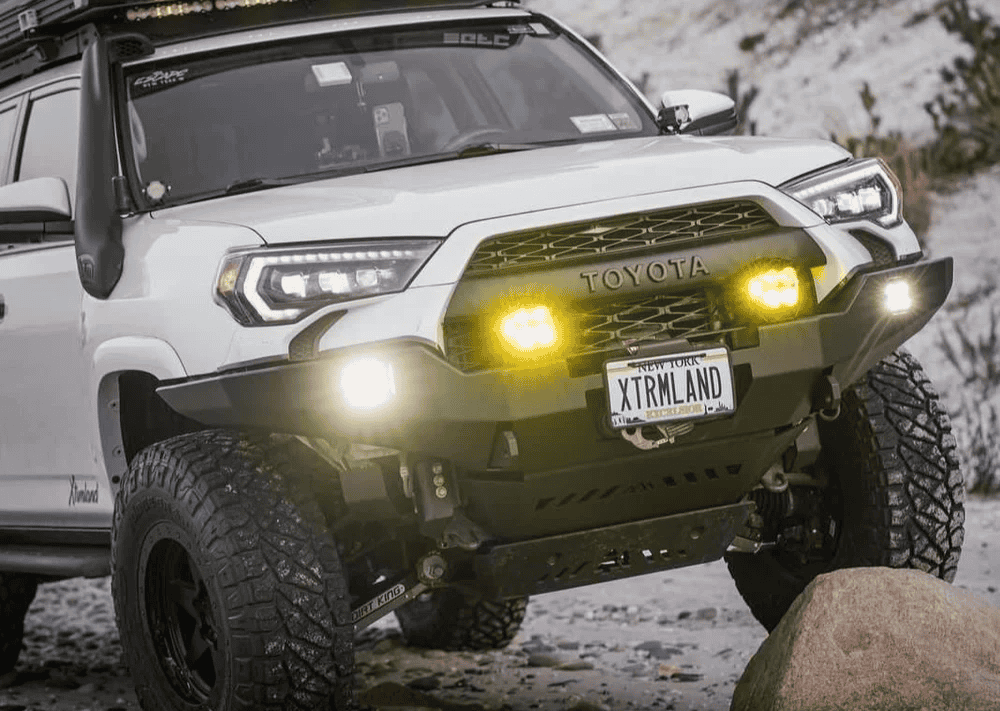Overland Vehicles

A cabin air filtration system treats the air that enters through a vehicle’s HVAC intake before it reaches occupants. Unlike the engine air filter, which protects the powertrain, the cabin filter protects people by capturing airborne particles and, with the right media, certain gases and odors. Air passes through a pleated or layered element where particles are intercepted, impacted, or diffused onto fibers. The system’s performance depends on media type, surface area, and the seal between the filter and the housing.
Filter media comes in several families. Mechanical particulate filters use dense fibers to capture dust, pollen, and soot. Electrostatic blends add a charge effect that improves capture of fine particles without excessive airflow restriction. HEPA level media targets very small particles, which can help during wildfire smoke events or in high traffic corridors. Activated carbon layers adsorb volatile organic compounds and reduce odors from fuel, exhaust, or campfire smoke.
Every cabin system must balance airflow and efficiency. Higher efficiency filters catch more fine material but can raise pressure drop if surface area is limited. Excess restriction can cause weak vents, noisy blowers, and uneven window defogging. The ideal setup pairs an efficient filter with adequate surface area, tight sealing edges, and a clean intake path so the blower can move air quietly and consistently.
Choose a filter that meets your sensitivity needs without choking the blower. Look for increased pleat count or deeper elements rather than a denser sheet with minimal area. A good design sustains airflow, maintains defogging performance, and keeps cabin noise low.
Fresh air mode draws outside air through the filter, while recirculation reuses cabin air with lower particle load. In dusty conditions, recirculation can reduce intake load, but long use may raise humidity. In specialty builds, mild positive cabin pressure using controlled intake helps keep dust from seeping in through gaps.
Cabin filters are not set and forget components. Change intervals vary by climate, terrain, and usage patterns. City drivers contend with soot and brake dust, while rural and overland travelers see dust, pollen bursts, and occasional smoke. Many owners swap filters every 12 months or 12 thousand miles, but harsh environments may require shorter intervals.
Watch for practical signs. Weak airflow at normal fan speeds, persistent window fog, or a musty smell point to a saturated filter. Visual inspection helps, but color alone can be misleading since carbon layers darken quickly. Check for warped frames or gaps in the housing that allow unfiltered bypass, and ensure the intake cowl drains are clear so water does not wick into the media.
Even the best media fails if air bypasses the element. Confirm the filter seats squarely, seals against its frame, and matches the housing depth. In older vehicles or aftermarket housings, small gaps can reduce effectiveness dramatically.
If you routinely drive unpaved routes, tow toys to trailheads, or sleep in the van, consider higher capacity elements, pre filter screens at the intake, and duct sealing. These steps reduce dust load, extend filter life, and keep bedding and soft goods cleaner.
Vans and expedition builds face unique air quality challenges. Long days on gravel, campfire smoke, and idling in trail parking lots add up. Practical upgrades include larger surface area filters, carbon layers for odor control, and intake pre screens that stop leaves and insects before they reach the media. Sealed duct joints and tight glovebox housings prevent bypass. For rigs that see extended dust, mild cabin pressurization through a controlled intake can keep fine silt from creeping in at door seals.
Integration matters. Any change to media density or surface area should be paired with fan curve awareness and defogging checks. After an upgrade, verify airflow at the windshield vents, listen for blower strain, and confirm the HVAC controller responds normally. A smart setup keeps cabin air cleaner without sacrificing comfort or safety.
If your build plan includes insulation, window coverings, or interior upgrades, it is efficient to address filtration and duct sealing at the same time. Consolidating this work avoids duplicate labor and ensures the HVAC system remains accessible for future filter swaps. For inspiration on trail ready platforms, explore our overland rigs and see how airflow and comfort are considered alongside suspension, storage, and power.
Specialty vans benefit from professional fitment, especially when pairing high efficiency media with unique cabin layouts. A shop that understands off grid travel can tune intake strategy, validate defogging, and test for dust intrusion under real conditions.
Clean cabin air makes road time calmer, sleep more restful, and long hauls less tiring. If you need guidance on filter selection, intake screens, or duct sealing in a van or truck based platform, our team can help. We design and integrate systems that respect airflow, reduce odors, and manage fine dust without creating blower strain. See how we tailor components for travel environments on our custom overland upfit page, and learn what sets our approach apart at why choose OZK Customs. When you are ready to map a build path that fits your routes and climate, start with our overland rigs overview and plan a visit to Fayetteville Arkansas. We will walk you through options, integrate upgrades, and test everything with you before you hit the road.
Ready for fresher cabin air on every mile. Schedule a build consult to integrate upgraded filtration, sealed ducting, and airflow tuning in your van or overland rig. Our Fayetteville shop will tailor a system to your routes and climate, then test it with you at handoff. Book your consult now.
ADDRESS:
6159 E Huntsville Rd, Fayetteville, AR 72701
PHONE:
(479) 326-9200
EMAIL:
info@ozkvans.com